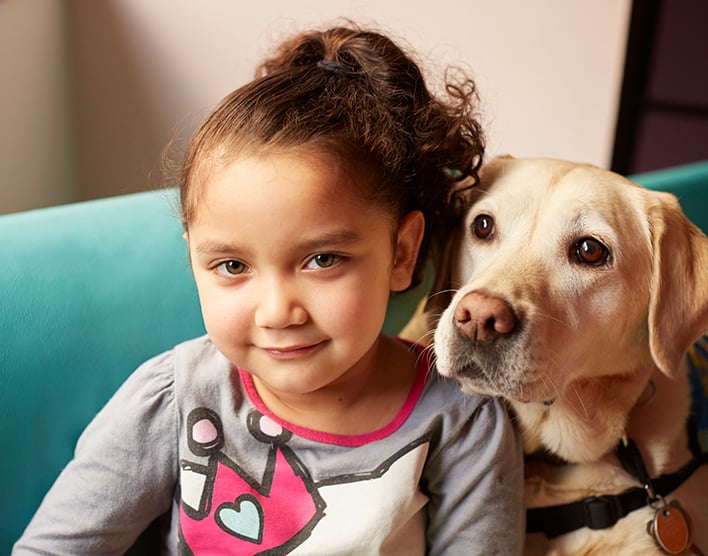Tender wagging care
Our therapy dogs spread joy and smiles at the bedside and throughout the hospital.
Visit Child Life services

Cystic fibrosis is an inherited disease that causes the body to produce a thick, sticky mucus. Normally, mucus is a good thing. A thin layer of mucus lubricates many of the body's inner linings, helping things run smoothly. But in someone with cystic fibrosis, the mucus is thicker and stickier than normal. This dense coating of mucus takes a toll on the lungs, making breathing difficult and creating an environment that results in chronic infection.
Another problem area is digestion. The sticky mucus can interfere with the body's ability to digest food and absorb nutrients. Affecting roughly 30,000 Americans, cystic fibrosis is one of the most common lung diseases, especially in children. A genetic mutation, cystic fibrosis is passed down through families. Millions of people carry a single genetic mutation without any problem, but if a person inherits two of the defective genes the cystic fibrosis ensues.
Warning signs of cystic fibrosis in infants and toddlers may include stunted growth, lack of weight gain and salty-tasting skin. Older children may suffer from constipation, coughing, fatigue and loss of appetite. Because the condition targets the lungs, many of the signs are breathing-related, such as:
Children with cystic fibrosis are often diagnosed before a month of age through newborn screening. The screen can miss some cases, which then may present later with signs and symptoms of CF. Many of those presenting later have milder forms of the disease and these children may reach their teens before an accurate diagnosis is made. At birth, most newborns are tested for cystic fibrosis with something called the IRT (immunoreactive trypsinogen) and gene screening. Other helpful diagnostics include a blood test to look for additional genetic clues and a sweat chloride test to look for telltale signs of high salt levels in the sweat.
Parents will want to find a team of health care providers that specializes in caring for children with cystic fibrosis. Many excellent treatments and therapies exist. One of the primary treatment goals is to keep the child's airways open by recruiting one of the body's natural lung-clearing mechanism: the cough. Several cystic fibrosis therapies trigger forceful coughing. By coughing and, therefore, expelling the sticky mucus, the airways open and breathing eases. Inhaled medications can thin the mucus to make it easier to cough up.
Another method of breaking up mucous in the lungs is to thump or clap on the chest, either with one's hands or with the help of a high-tech vest (Appropriately, this therapy is often called chest percussion). Another important focus is to prevent infections, especially of the respiratory tract. On a less direct note, people with cystic fibrosis can benefit from certain dietary supplements and food restrictions. For instance, swallowing digestive enzymes with meals can help the body absorb much-needed nutrients, while a high-fiber intake can help keep constipation at bay.
UCSF Benioff Children's Hospitals medical specialists have reviewed this information. It is for educational purposes only and is not intended to replace the advice of your child's doctor or other health care provider. We encourage you to discuss any questions or concerns you may have with your child's provider.

Ranked among the nation's best in 11 specialties
Tender wagging care
